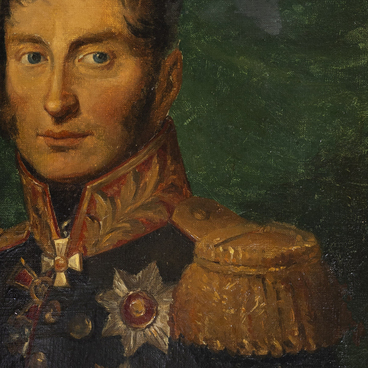Alexander Alexeyevich Tuchkov (March 7, 1777, Kyiv — August 26, 1812, near the village of Semenovskaya, Mozhaysky Uyezd, Moscow Governorate) was a representative of an old noble family. In 1788, he was enlisted as a bayonet-junker in the Bombardier Regiment. Six years later, he was promoted to captain and transferred to the 2nd Artillery Battalion.
Alexander Tuchkov participated in the campaign of 1806–1807 and distinguished himself in the Battle of Golymin in Poland. In late 1806, he was appointed chief of the Revel Musketeer Regiment. He fought near Guttstadt, on the Passarge River, near Heilsberg and Friedland, and was awarded the Order of St. George, 4th class.
In the Russo-Swedish War, he took part in the siege of Rantasalmi and Kuopio, and participated in the battle of Idensalmi. After that, Alexander Tuchkov was promoted to major general. In 1812, he fought near Vitebsk, Smolensk and Valutino. In the Battle of Borodino, during a counterattack at the Bagration flèches, he was mortally wounded, while leading the Revel Infantry Regiment with a banner in his hands. His body was never found.
In 1820, Margarita Mikhailovna, his widow, built the first monument on the Borodino field — the Church of the Image of the Savior Not Made By Hands — at the place of his death. Later, the Borodino Monastery of the Savior was established there.
In the 1820s, a number of portraits by the English artist George Dawe, in which he depicted generals and participants in the Napoleonic Wars, were placed in the Military Gallery of the Winter Palace. The Borodino Museum-Reserve displays a reproduction by an unknown artist.
In the portrait displayed at the Military Gallery, the general is depicted in a uniform of the 1817 model with a medal “In memory of the Patriotic War of 1812”.
The canvas housed in the
Borodino Museum presents Tuchkov in a general’s military uniform of the 1808
model with the Orders of St. Vladimir, 3rd class, St. Anna, 2nd class, and St.
George, 4th class. It is clear that this portrait was painted during Tuchkov’s
lifetime or shortly after his death. According to a hypothesis, this work was
given to Dawe to be used as a reference.



